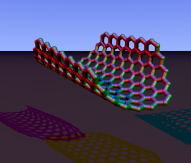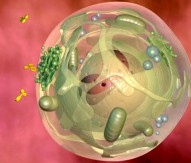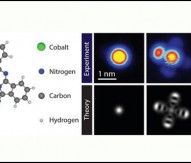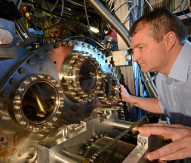

Dr Steffi Friedrichs © Nanotechnology Industries Association
NIA hopeful over H2020 nanotech funding
Originally created as a national industry representative body for the UK in 2005, the Nanotechnology Industries Association (NIA) quickly grew to become the international representative body of the industry. Under Horizon 2020, nanotechnology receives recognition under the Industrial Leadership pillar as a Key Enabling Technology (KET) and could receive up to €3.8m of investment, the most compared to other KETs.
Dr Steffi Friedrichs is the director general of the NIA and provides her thoughts on the EU’s new framework programme.
Can you give me a brief background to the work of sector and the NIA?
The NIA was created because the industry saw a need for representation as nanotechnology was becoming increasingly debated by UK government policy makers, society and the public. After the government set up a stakeholder engagement group, the industry found it was being represented by individual companies rather than a collective group. This soon proved unworkable and money was then set aside to form a nanotechnology association.
Following our incorporation in the UK, we were quickly joined by companies from continental Europe and the USA and were soon urged by our members to move to Brussels. An increasing number of regulations have been made regarding the technology, particularly in Europe and there are fewer and fewer directives that member states can implement at a national level. Consequently, moving to Belgium seemed to be the correct way forward. In 2009, we were incorporated as the over-arching international Nanotechnology Industry Association in Brussels.
Nanotechnology will never be an industry or market sector – it is an enabling technology that feeds into all existing industry and market sectors. This means that the NIA is active as a horizontal representative organisation, cutting across all other existing industries and markets, representing both the technological and science aspects of nanotechnology.
Our work is focused on developing public-private partnerships (PPPs) that feed into the on-going international programmes on nanotechnology safety, for example we are heavily involved with the OECD and have set up three separate PPPs, worth a total value of about €10m.
We also represent companies in their needs and activities in nanotechnology, as this is a requirement of all NIA members. Nanotechnology is still very much in its infancy and it does not have the broad economic input that other more established industry sectors have.
What advancements in nanotechnology do you think we could witness under Horizon 2020?
Nanotechnology and nanomaterials feature in the majority of the other KETs, including some processes and analytical solutions for biotech; there will also be some advancement in ICT. So, concentrating on those four KETs, we will be able to incorporate a lot of nanotech-based innovation – not because of technology push, but because I believe nanotech will offer the best solutions in most of the cases to problems that might be tackled in that sector.
PPPs will again be honoured under Horizon 2020. How important are PPPs for the nanotechnology industry as opposed to other forms of financial collaboration?
We saw the need for setting up research efforts in the form of PPPs rather than simply for public-funded projects. Consequently, we established a process by which we could create transparent PPPs that benefit both industry and policy makers that also involve stakeholders such as environmental NGOs and consumer groups. We always have them sitting on our advisory group to keep our industry transparent and balanced. We would like to involve these stakeholders more actively but often time is the limiting factor.
First, we established a PPP process addressing those that know the most about the new technology – industry. When industry decides to invest, it often means they have completed the maths and carried out some basic analysis. Industry can offer expertise and materials when it comes to basic testing as well as top research facilities. Yet industry also needs regulatory certainty and additional help for development beyond the limits of one single company. The NIA therefore puts together that package of offerings and the needs to the public sector, which the public sector completes vice versa. Most of the time, offerings would be funding, needs would be regarding answers to questions about uncertainty, economic input, commercial value. This is then combined into one big PPP.
The NIA also helps to keep admin costs low by completing most of the paperwork for our companies and that is definitely, at a time of economic crisis, something that is very welcome.
How vital is Horizon 2020 funding to the nanotechnology industry?
I think how Horizon 2020 funding is distributed and administered will make a difference compared to FP7. PPPs work a lot better because they actually demand an identification of mutual interest in running a project rather than having one source of money and the rest of the project beneficiaries monitoring how the funding is spent. We also hope that the administrative burden of Horizon 2020 will be limited as some of the FP7 projects had an incredibly high admin burden. I hope money will be better focused towards deliverables rather than admin and dissemination.
Nanotechnology sits under the ‘Industrial Leadership’ pillar of Horizon 2020. What efforts do you think the association and wider nanotech industry can make in helping the EU secure this goal in the world?
By establishing PPPs, this means leadership in the industry. Industry knows why they are carrying out research and they may have advanced the specific technology in the hope of exploiting it to another level already, maybe in-house or commercialisation. This means industry is the expert, the driver and the leader in this type of initiative. Using a PPP helps to go to the next step, more efficiently with less burden on one specific company and allows the input of others working in the industries on the subject matter; this can also include policy makers. This establishes the key dynamic of mutual interest, vital to the future of nanotechnology.
Dr Steffi Friedrichs






